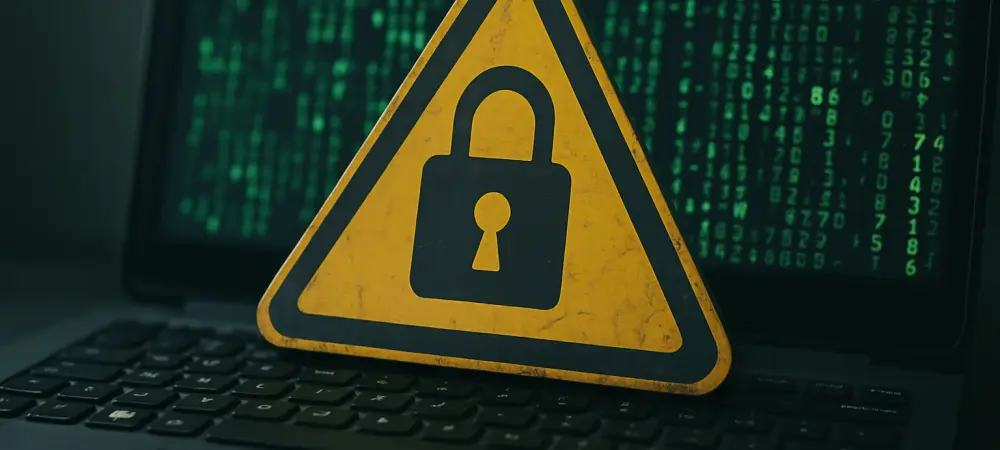Recent analyses of the cyber threat environment have unveiled a significant decline in ransomware attacks throughout the second quarter of this year. A detailed report by NCC Group indicates a noteworthy 43% decrease in ransomware incidents during this period, evidencing a shift in cybercriminal behavior and successful law enforcement interventions. With only 1,180 attacks reported between April and June, compared to 2,074 in the first quarter, this decline suggests multiple influencing factors reshaping how cyber threats evolve. Key operational disruptions among major ransomware operators, coupled with intensified law enforcement efforts, emerge as prime contributors to this sudden shift.
Influence of Law Enforcement and Ecosystem Shifts
Unpacking Law Enforcement’s Role
The downturn in ransomware activities can be largely attributed to stepped-up law enforcement efforts against top-tier groups like Clop and RansomHub. Strategic actions have led to the disbanding or inactivity of these previously dominant operators. These interventions not only crippled some criminal entities but also resulted in a reshuffling within the ransomware ecosystem, compelling affiliates to seek new alliances. As established networks faltered, affiliates were forced to adapt, often aligning with lesser-known or emerging groups to sustain their illegal operations. Such shifts are indicative of how responsive ransomware operators are to external pressures, underscoring the ever-evolving landscape of cyber threats.
Internal Discord Among Cybercriminals
The cybercrime ecosystem has not only been disrupted externally but also internally through infighting within and between ransomware groups. LockBit, for example, faced insider leaks that exposed vulnerabilities, hindering its operations. Conflicts such as DragonForce’s confrontations with rival factions have also destabilized operations, illustrating how internal discord can fragment alliances and cause operational failures, such as RansomHub’s notable infrastructure outage. These disruptions highlight the complexities within the interconnected world of cybercriminals, where rivalries and internal strife can have a tangible impact on the broader threat landscape.
Analyzing Changing Threat Dynamics
Emergence of New Ransomware Groups
Despite the overall reduction in attack frequency, new players have seized opportunities within the disrupted landscape. Qilin emerged as the most active group in the second quarter, boasting 151 claimed incidents. Meanwhile, Akira and Play maintained a consistent presence with 131 and 115 attacks, respectively. SafePay also gained prominence, showing a rise in activities linked to major actors like LockBit and BlackCat. Though information on SafePay remains sparse, its affiliations with these renowned groups signal a potential rise in threat levels. The emergence of these actors underscores the adaptability of cybercriminals in the face of challenges posed by law enforcement and internal disruptions.
Target Sectors and Risk Assessment
The industrial sector found itself at the forefront of the ransomware threat matrix, enduring the highest number of attacks this quarter. The consumer discretionary sector, encompassing retail industries, followed closely. These sectors, often crucial cogs in economic machinery, offer lucrative targets for ransomware operators seeking significant payoffs. The findings reflect an ongoing evolution in ransomware targeting strategies, where certain industries face elevated risks due to their intrinsic roles in the global economy. Businesses in these key sectors must now more than ever employ robust cybersecurity measures to mitigate these persistent risks and safeguard against potential disruptions.
Future Outlook on Cyber Threats
Recent assessments of the cyber threat landscape have revealed a substantial reduction in ransomware attacks during the year’s second quarter. According to an in-depth report by NCC Group, ransomware incidents have declined by an impressive 43% in this timeframe. This decrease indicates a notable shift in the behavior of cybercriminals and the effectiveness of law enforcement actions. From April to June, only 1,180 ransomware attacks were recorded, a significant drop from the 2,074 incidents reported in the first quarter. This downward trend hints at several factors that are influencing the evolution of cyber threats. Operational disruptions within prominent ransomware groups, combined with heightened law enforcement efforts, are emerging as key drivers behind this considerable change. These findings suggest a reshaping of the cyber threat landscape, highlighting how strategic interventions and evolving tactics are impacting cybercriminal activities. The decrease in attacks underscores the critical role of coordinated efforts in thwarting these digital threats.

